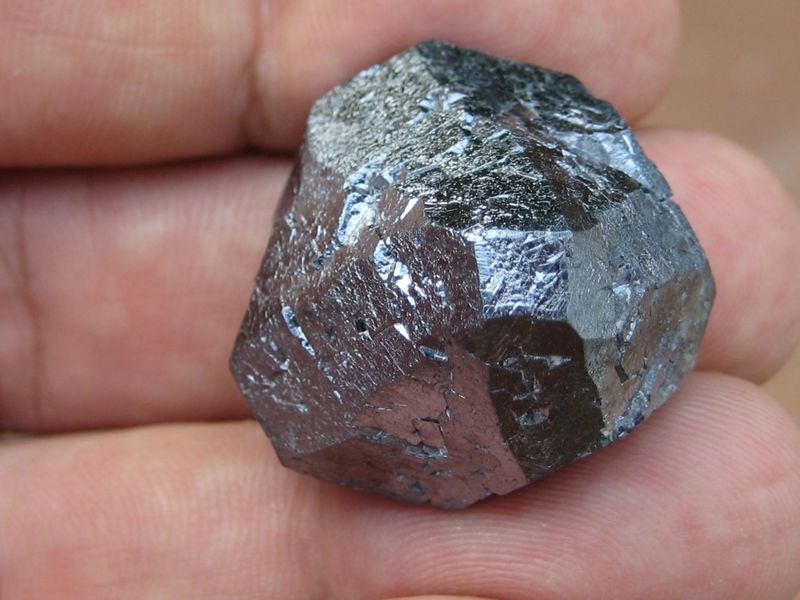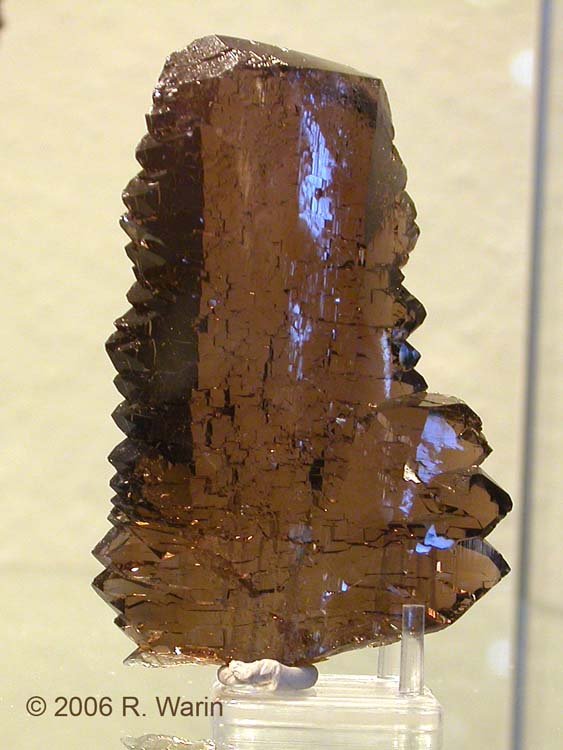marco campos-venuti

Joined: 09 Apr 2014
Posts: 228
Location: Sevilla



|
 Posted: Jun 28, 2025 14:11 Post subject: Gwindel Skutterudite? Posted: Jun 28, 2025 14:11 Post subject: Gwindel Skutterudite? |
|
|
A curiosity I found in Sainte Marie this year. This skutterudite crystal from Bou Azzer is twisted. It was a typical Moroccan lot consisting of a box with at least 30 crystals and all of them showed the same phenomenon. And all the crystals were curved in the same direction. I get three of them.
It is difficult to visualize in a single photo. To clarify for the observer, the square faces are of the cube (6), the triangular ones are of the octahedron (8) and the elongated ones are of the rhombohedron (12). The photo is centered on one face of the cube and we can see that the rhombohedron face at the top bends to the left. I measured a rotation of 28 degrees, measured between the cube face and the rotated rhombohedron face which in an ideal crystal should be parallel to the cube.
Has anyone ever seen this phenomenon? Can we talk of Gwindel Skutterudite?
| Mineral: | Skutterudite |
| Locality: | | Bou Azzer mining district, Drâa-Tafilalet Region, Morocco |  |
|
| Dimensions: | 3 cm |
| Description: |
|
| Viewed: |
84 Time(s) |

|
|
|
Roger Warin

Joined: 23 Jan 2013
Posts: 1236



|
 Posted: Jun 29, 2025 00:14 Post subject: Re: Gwindel Skutterudite? Posted: Jun 29, 2025 00:14 Post subject: Re: Gwindel Skutterudite? |
|
|
Hello Marco,
I won't mention a possibility similar to the formation of twisted quartz, because only quartz, with its unique tectosilicate structure, can cause such deviations. I think Pete is much more knowledgeable than I am and can give you better advice.
As you know, for other reasons, silica is my nemesis.
Actually, it's been a long time since we've talked about Gwindels on FMF.
I'd like to see the subject brought up again on the forum.
Your skutterudite crystal has undergone somewhat chaotic growth, which I would attribute to poorly stabilized growth kinetics. The important thing is that the lattice appears intact. The proof is that there is only one multiple axis in the photo. It is a single crystal whose lattice appears perfect but whose overall morphology has been affected by the vagaries of growth.
The environment must have been disturbed, but the influence of the lattice remained predominant for thermodynamic reasons.
You know the problems posed by Dauphiné twinning, which occurs without significant displacement of atoms. Even des Cloizeaux (1817-1897) mentioned it.
A Gwindel results from parallel-axis growth undergoing a slight (random) deviation from the vertical axis. The chirality of quartz remains.
I have attached a very long, exceptional Gwindel as an illustration.
| Mineral: | Quartz |
| Description: |
|
| Viewed: |
30 Time(s) |

|
|
|





